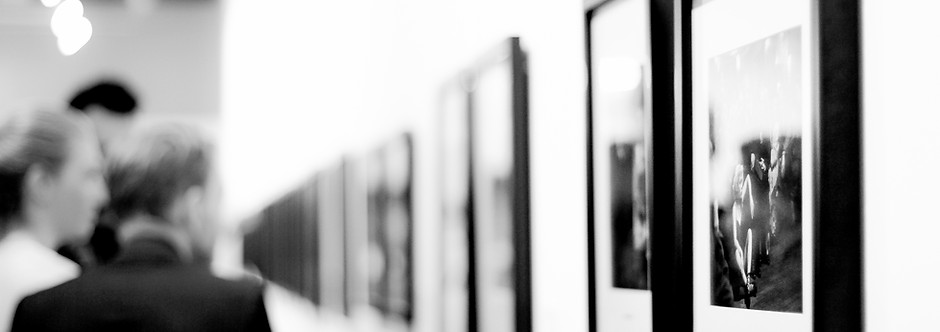The Secret Art of Microsoft
- Shlomit Oren
- Jul 10, 2019
- 3 min read
Software giant Microsoft does not boast of its 30-year-old art collection, now counting about 5,000 works of art designed to provide employees with an inspiring and creative work environment.
It all began in 1987, when Microsoft was a medium-sized 12-year-old company with a local character. A small group of employees interested in art set a goal of collecting and displaying artworks by artists from the Puget Sound community, where the company was based. The move was encouraged by the company's management, which recognized this as a way of supporting and engaging the local community.
In the past 30 years, the collection has grown to gigantic dimensions, like Microsoft itself, and now includes 5,000 works of art in various mediums with an emphasis on paintings, prints, drawings and ceramics. Initially, the collection focused on the work of emerging artists, whose acquisition contributed to the development of their careers. In recent years, however, though the focus in acquisition of work by local artists remains, emphasis has been also put on adding works by artists of color, in order to balance their representation in the collection.

Cultural Diversity of Customers and Employees
Unlike financial services companies and other large corporations which brag of their art collections, Microsoft does not make its collection public or uses it for public relations purposes. Obtaining in-depth information about the collection is not an easy task, and the work of the team that manages the collection seems almost secretive.
Asked what the company's motivation to collect art, Microsoft officials reply that its purpose to create an inspiring work environment which promotes creativity and innovation among employees.
Moreover, Microsoft asserts that acquiring and exhibiting art which represents the cultural diversity of its employees and customers reflects the company's standards of creativity and innovation, charging the work environment with energy and making it more humane. For this end the artworks are exhibited and displayed in the 140 buildings of Microsoft's offices in North America, allowing employees to come in direct and daily contact with them.
Furthermore, Microsoft holds an educational program designed to enrich and enhance employees’ familiarity with the art field, creating opportunities for interaction with the collection such as exhibitions of prominent items in the collection, and holding artist talks for the benefit of employees and their relatives.
Despite the secrecy surrounding the collection, the collection’s management team keeps social media up to date regarding new acquisitions, studio visits and exhibitions featuring prominent artists. One of the unique activities which Microsoft takes pride in is the "Tour De Collection" bicycle race, which takes place each year as part of a car-less day, in which employees pass the campus art track.

Corporate Collections Club
Microsoft takes pride in being included in the prestigious club of corporate art collections. Other members include Progressive Insurance, which began collecting in 1974 and now features 2,000 artists in 7,500 works; Or Capital One’s collection, which is similar in size to that of Microsoft. However, Microsoft is well behind JPMorgan Chase, which was the first company to collect art in an orderly fashion in 1959, led by David Rockefeller, who was also an enthusiastic collector on his own right.
While JPMorgan's 30,000 artworks collection displayed across 450 offices worldwide, is probably the highest-value corporate collection today, Deutsche Bank trumps it in size, with about 70,000 artworks in their collection.
Microsoft is an exception among the art collecting companies, as most of them belong to the financial sector, with an emphasis on banks and insurance companies. Technology and high-tech companies do not traditionally collect art, even though, as Microsoft executives say, an art-rich work environment can contribute to the creativity of the company and add to its humane values.

Some of the works in the Microsoft collection are site-specific and were commissioned specially by the company. Among those are the work of Scott Chico Raskey, glorifying the lobby of one of the buildings, and is made of glass, metal, LED lamps and an Arduino. The works of artists such as Cable Griffith and Lisa Gilliey represent a fantastic and ideal world, while the works of Junko Yamamoto and Ryan Molenkamp have a tendency to abstract, which characterizes quite a few corporate collections that seek to avoid figurative representation that may offend certain groups.
The most interesting artworks are those that combine tradition and modernity, such as the glass vessels on which Preston Singletary carved a figure emulating native American totems, or Faig Ahmed's carpet work, in which the artist deconstructs and re-assembles the traditional craft work. Israeli art is represented by artist Daniel Rozin, who uses technology in a way which resonant with Microsoft's DNA.

Most of Microsoft’s art collection is enjoyed by employees in North America offices alone. The initiative has not yet expanded worldwide and is not to be spread any time soon. Even though infrastructure for extension is possible, legal and logistical requirements would make it prohibitively difficult to expand the Collection internationally.







who curates or manages this collection?
תודה רבה לך !